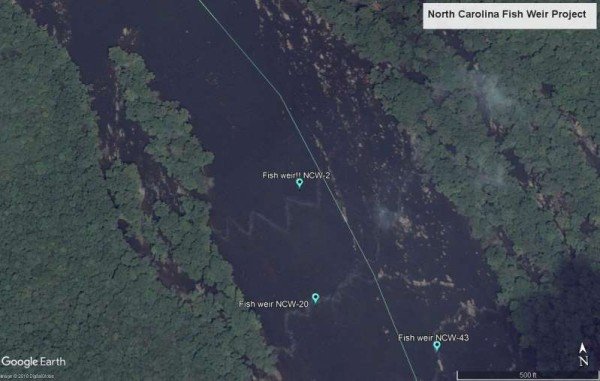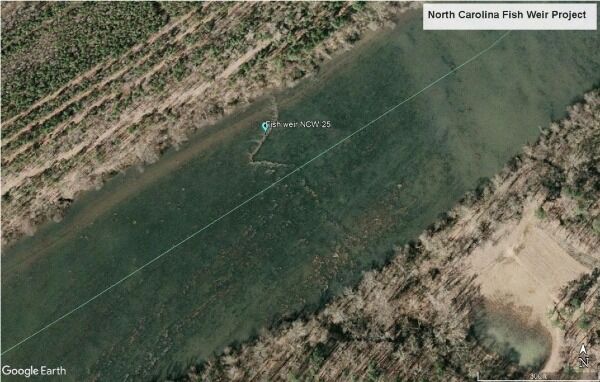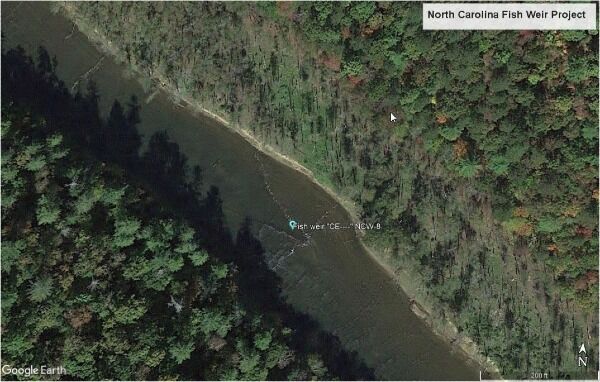Fish weirs are fish traps that were extensively used by Native Indians and Colonial settlers to gather resources. However, some prehistoric fish weirs are found around the world that are so old that it’s difficult even to date them accurately.

Page Contents
What Are Fish Weirs?
A fish weir is a manmade structure that is placed in a stream or a tidal lagoon to trap fish travelling down the stream or when the tide recedes.
There are indications of ancient fish weirs across the world, including Russia, Australia, and Japan. Some of these structures even date back 8000 years.
Evolutions of this technique to catch fish that are still used today include:
- Fishtrap
- Coret
- Yair
- Passive Trapping
- Kiddle
- Visvywer
- Gorad
- Tidal Weir
- Fyshe Herdes
- Fish Impoundment
- Weir
Fish weirs have different forms, shapes, sizes, and make use of a variety of construction material, depending on availability and environment.
The simplest form of a fish weir is using piled stones in a river to form a natural W or V-shape that can funnel the fish towards a single area.
After the fish are redirected to that single region, they can be speared or trapped using a woven basket.
Along with stone, wooden stakes and bushes have been found to have used in many prehistoric fish weirs.
However, experts have found dating the wooden structures to be difficult (using radiocarbon dating) due to the natural decay of the wood (2).
Like with the latest discovery, several V and W-shaped fish weirs were found in the rivers and streams of the Piedmont mountain regions (3).
Where Is The World’s Most Ancient Fish Weir Found?
Prehistoric fish weirs can be found across the work, and the earliest ones can date back eight thousand years.
Here’s a list of the oldest fish weirs found around the world:
- Freshwater fish weirs in the Netherlands and Denmark in the Mesolithic era around 8000-7000 years ago (4).
- Sebasticook fish weir in Maine is the oldest fish weir in North America that dates back to 5770 BP (5).
- Alaska also has fish weirs that are more than 3000 years old.
- Japan has some weirs that date back to the end of the Jomon period to be around created around 1000 BC (6).
- Lake Condah in Victoria, Australia has a 6600-year-old stone eel-trapping weir called the Muldoon’s Trap Complex (7).
- The Persian Empire created the Band e-Dukhtar stone weir that was created between 500 and 330 BCE.
- Zamostje 2 weirs are found near Moscow (Russia) that date back 7500 years (8).
- Some evidence indicates that southern Africa’s fish weirs (known as Visvywers) may date back to 6000-1700 BP (9).
- Glenrose Cannery in British Columbia has a fish weir that’s between 4500 and 5280 BP old.
- Wooden fish weirs (called Wooton-Quarr) were found on the Isle of Wight that dates back to the Neolithic and Bronze Age (10).
Who Found These Prehistoric Fish Weirs?
Assistant State Archaeologist David J. Cranford from the North Carolina Office of State Archaeology used images from Google Earth and Keyhole (its predecessor) to find over 750 suspected fish weirs in the Southeast (11, 12).
This research is part of the North Carolina Fish Weir Archaeological Project and focuses on North Carolina since the state has the most number of fish weirs in the USA at 219.
The information on the prehistoric fish weirs was brought to the public’s attention when Cranford gave his presentation in the Southeastern Archaeological Conference in Jackson, Mississippi last month (13).
What Does This Discovery Suggest?
750 sounds like a large number of fish weirs to be found. However, many of these are probably historic dams, locks, sluiceways, and other aquatic structures.
Even so, several of these should be new fish weirs that remain to be discovered.
Cranford states that the Yadkin/Pee Dee River has the highest density of fish weirs of any river formation (14). In fact, 296 of the previously recorded archaeological sites are found to be located within 500 miles of the fish weir sites in North Carolina.
According to Cranford, the next step to take is using advanced archaeological mapping techniques like Bathymetric LiDAR and photogrammetry to perform targeted systematic surveys on the possible fish weir locations.

In fact, many of the previously known fish weirs may have already been nominated for the National Register of Historic Places. I found Poe Fish Weir and Dr David P. House Weir in North Carolina to be registered in the National Register of Historic Places (15).
However, until we find out exactly what the structures underneath the river are, we won’t know for sure if it’s a prehistoric fish weir or something else altogether.
One of the surprising things about prehistoric fish weirs is that no one knows who first started building them or how the technology managed to span the globe at that time.













